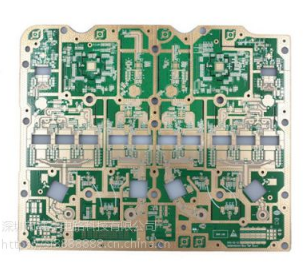PCB (Printed Circuit Board), the Chinese name is printed circuit board, also known as printed circuit board. It is an important electronic component and a support for electronic components. Because it is made by electronic printing, it is called a "printed" circuit board.
In the production process of electronic products, there will definitely be a printed circuit board production process. Printed circuit boards are used in electronic products in all industries. It is the carrier through which the electronic schematic diagram can realize the design function, turning the design into a physical product.
Before the advent of the PCB, the circuit was composed of point-to-point wiring. The reliability of this method is very low, because as the circuit ages, the rupture of the circuit will cause the circuit node to open or short circuit. Winding technology is a major advancement in circuit technology. This method improves the durability and replaceability of the circuit by winding small-diameter wires on the poles at the connection point. As the electronics industry develops from vacuum tubes and relays to silicon semiconductors and integrated circuits, the size and price of electronic components are also falling. Electronic products appear more and more frequently in the consumer field, prompting manufacturers to find smaller and more cost-effective solutions. Thus, the PCB was born.
Briefly describe the process of PCB production:
Cutting -> Dry film and film -> Exposure -> Development -> Etching -> Stripping -> Drilling -> Immersion copper plating -> Solder mask -> Silk screen -> Surface treatment -> Forming -> Electrical measurement, etc. These steps

Take the production process of double panels as an example:
1. Cutting
Cutting is to cut the copper clad laminate to make it into a board that can be produced on the production line. It will definitely not be cut into small pieces here. It is to put together a lot of pieces according to the PCB diagram, and then cut the material. After the PCB is completed, cut into small pieces.
2. Paste dry film and film. Paste a dry film on the copper clad laminate. This film will be cured by ultraviolet rays to form a protective film on the board. This facilitates subsequent exposure and etches away unnecessary copper.
The blue one is the film, the yellow one is copper, and the green one is the FR4 substrate.
Then paste the film diagram of the PCB diagram. The film diagram is like a black and white negative of the photo, which is the same as the circuit diagram drawn on the PCB.
The function of the film negative is to prevent the ultraviolet light from passing through the place where copper needs to be left. As shown in the picture above, the white one is not transparent, and the black one is transparent and can transmit light.
3. Exposure
Exposure, exposure is to irradiate ultraviolet rays to the copper clad laminate attached to the film and the dry film. The light shines on the dry film through the black and transparent part of the film, and the dry film is cured when the light is exposed, and the light is not exposed. The same as before. As shown in the figure below, after the blue dry film is irradiated with ultraviolet rays, the areas irradiated by the front and back sides are cured. For example, the purple part has been cured.
4. Development
Development is to use sodium carbonate (called developer, which is weakly alkaline) to dissolve and wash off the unexposed dry film. Because the exposed dry film is cured, it will not be dissolved, but still remains. It becomes the picture below, the blue dry film is dissolved and washed away, and the purple solidified film remains.
5. Etching
At this step, the unnecessary copper will be etched away. The developed board is etched with acid copper chloride. The copper covered by the cured dry film will not be etched away, and the uncovered copper will be etched. Lost. The required lines are left.
6. Removal of the film
The de-filming step is to wash off the cured dry film with sodium hydroxide solution. During development, the uncured dry film is washed off, and the uncured dry film is washed away when the film is removed. Different solutions must be used to wash the two forms of dry film.
So far, the circuit boards that reflect the electrical performance have been completed.
7. Drilling
This step starts to punch holes. The punching includes holes for pads and holes for through holes. The picture below shows a PCB drill bit. This mechanical drill bit can drill holes with a minimum diameter of 0.2mm.
8. Immersion copper, electroplating
In this step, the pad hole and the hole wall of the via are plated with a layer of copper and the upper layer, and the lower two layers can be connected through the via hole.
9. Solder mask
Soldering mask is to apply a layer of green oil to the place that is not soldered, which is not conductive to the outside world. This is through the screen printing process, and the green oil is applied, and then the process is similar to the previous process, light exposure, development, and soldering. The pad is exposed.
10. Silk screen
Silk-screen characters are printed on the component label, LOGO, and some descriptive text through the method of silk-screen printing.
Summary: The PCB production process is very complicated. Taking a four-layer printed board as an example, the production process mainly includes PCB layout, core board production, inner PCB layout transfer, core board punching and inspection, and layer Steps such as pressing, drilling, copper chemical precipitation on the hole wall, transfer of the outer PCB layout, and etching of the outer PCB.